Description
Product Benefits
- CSI Color Hardener increases abrasion resistance and surface density and reduces porosity. Proper use of CSI Color Hardener can increase surface strength.
- Used in conjunction with CSI Release Powder*, CSI Color Hardener is the preferred product for creating vibrant colors for imprinted/textured concrete.
- CSI Color Hardener is an excellent choice for the following types of projects:
- Colored, imprinted concrete flatwork and a variety of architectural concrete treatments that would benefit from improved pattern transfer and increased abrasion resistance.
- Surfaces which require increased abrasion and impact resistance, such as street paving, warehouses, shipping/receiving areas and distribution centers.
- Interior and exterior surfaces exposed to heavy daily wear and high-impact use.
- When concrete has been properly air-entrained, surfaces in cold, harsh climates exposed to freeze-thaw cycles.
- With its blend of select and gradated aggregates, architectural cements, and plasticizers, CSI Color Hardener creates surfaces that are substantially harder and more wear-resistant than concrete not treated with color hardener.
- CSI Color Hardener is available in many standard colors.
- CSI Color Hardener is an excellent choice for coloring concrete in order to achieve lighter colors and/or more brilliant colors.
- Light-reflective surfaces can be achieved through the use of a selection of white or light CSI Color Hardeners.
- To produce enhanced and richer effects, white-based CSI Color Hardener can be excellent base choices for the application of CSI stains and dyes.
- Due to extensive quality control measures in product manufacturing, CSI Color Hardener is designed to produce uniformity of color without color drifts. In addition, use of color hardener does not risk day-to-day variances experienced in ready mixed integral coloring.
Pre-Application
- Good subgrade preparation is essential. Subgrade must be well drained. To create uniform load-bearing characteristics and to reduce cracking, subgrade should be graded at a uniform thickness. Subgrade should be moist, completely consolidated, and free of frost. The subgrade should be dampened with water in advance of concreting. Concrete should not be placed over freestanding water or over areas that are muddy, frozen or soft.
- Good concrete mix design is essential. Concrete should contain a minimum of 5 sacks (3000 psi) of cement per cubic yard of concrete. All aggregate must be non-reactive. Water content should be at minimum, and the slump should not exceed four inches. A normal or retarded-set, water-reducing admixture may be used. An air-entraining admixture complying with ASTM C260 is recommended in all concrete flatwork that will be subject to freeze-thaw cycles. The concrete mix must not contain any admixture or additive that contains calcium chloride. During cold weather, a non-chloride accelerator may be used. No high-range water-reducing admixtures (superplasticizers) should be added unless ChemSystems, Inc. is consulted. Mixes containing fly ash will result in reduced bleed water, and can be more difficult to finish.
- Good concrete pouring practices are essential. Weather conditions should be considered during application. Follow ACI standards for installation, especially in extremely hot or cold weather conditions. Concrete mix should be controlled to provide good batch-to-batch uniformity. Concrete should be placed and spread so that it completely fills space inside the forms. Concrete should be consolidated by vibrating to create a suitable surface for finishing. If tamping is done, it should be kept to a minimum and concrete closest to the forms should be spaded. Before the appearance of bleed water, the surface should be screeded and wood-floated to the finished grade.
- Before applying CSI Color Hardener, a job site sample—using the specified mix design, tools and construction techniques—is recommended. If in doubt about application methods, consult ChemSystems, Inc.
- It is recommended that a pre-site meeting take place to include the proper authorities and to ensure site conditions are met.
Application
- Once concrete reaches the point when no bleed water remains on the surface, CSI Color Hardener should be evenly hand-broadcast or mechanically applied on the surface.
- CSI Color Hardener is usually provided in two shakes, with two-thirds of the product being applied in the first shake and one-third of the product being applied in the second shake (while also holding back a small amount for touch-up work).
- After the first shake has been uniformly applied and has absorbed water from the slab, the surface is floated. Wood floats are recommended during this first application.
- Apply the second shake perpendicular to the first application in a uniform manner. Magnesium or fiberglass floats may be used after the second application, providing all bleed water has left the surface.
- Saw cuts should be made as soon as possible without disturbing the joint edges.
- Care should be taken to prevent hard-steel trowel burns, especially at tooled joints and edges.
- In dry, hot or windy conditions, the use of an evaporation retardant/finishing aid may be used.

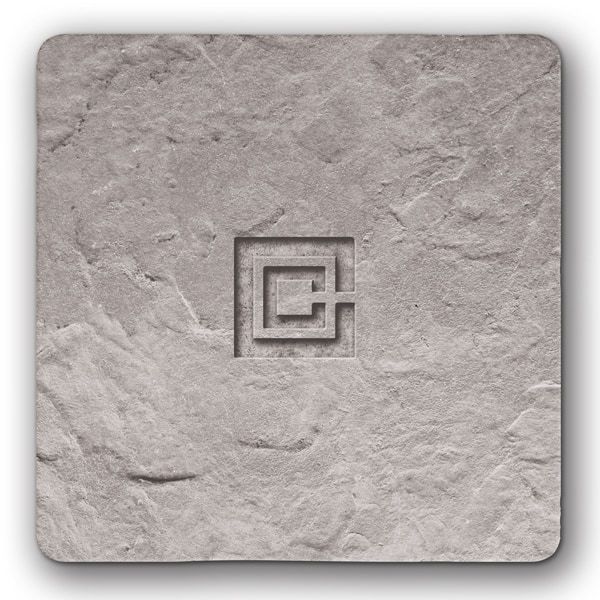
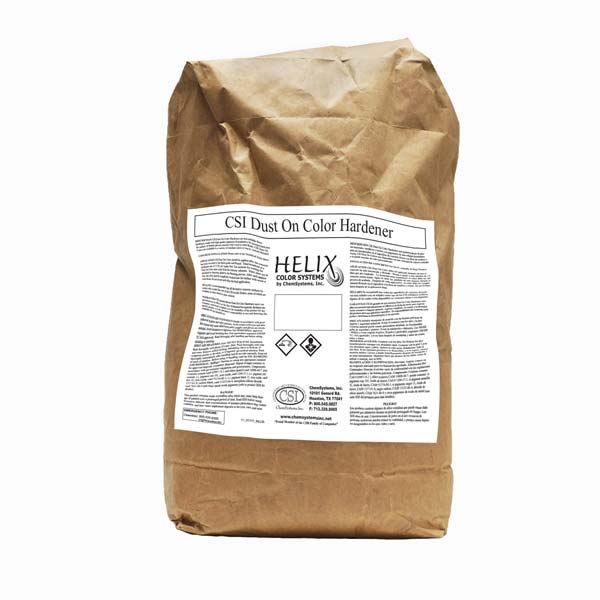
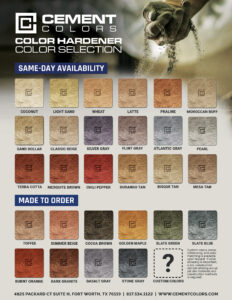

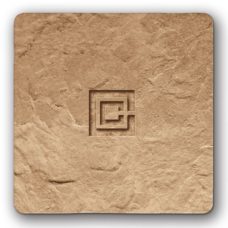
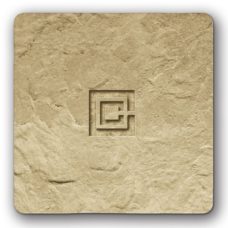
Reviews
There are no reviews yet.